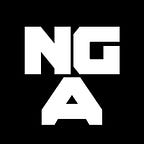Portrait of a lady
Artist Yvette Coppersmith reflects on the art of the portrait through the female gaze.
There are issues of greater concern than painting – the imminent danger of climate change, with a detour of a pandemic. But we rely on images to understand ourselves, and to see where we have come from.
Historically, those who had power to make images have been predominantly white and male. When women made images, they entered an established language and found ways to position themselves within that realm. Increasingly, in the second half of the 20th century, those ways and conventions have been subverted and reimagined by artists. What bodies have signified changes throughout art history, and the contemporary viewer can only interpret from their lived experience and knowledge of historical context. As anyone who has taken a selfie knows, there is always a gap between the lived experience and the image.
The earliest portrait in the Know My Name: Australian Women Artists 1900 to Now exhibition is Dian Dreams (Una Falkiner) 1909, by Violet Teague. Painted in the Edwardian era, the elegance of the subject would have been seen as an acceptable product of the time. For a woman to be in the role of the artist, which required ambition and financial independence, was an exception to the time.
While painting had been considered an admirable talent in a lady, it was the pairing of ambition with financial means that would permit a career in the arts. In the following decades, a handful of women were to be the precursors of the modern woman, and through their work bring new directions of modernism into Australia.
For me, a portrait sitting is about connection; the studio is a context to really see each other, a unique kind of intimacy in a digital world.
Living in the era of fourth-wave feminism, the digital tools for image making and distribution have been democratised. Image makers are no longer the domain of a privileged few. It’s important to realise several women artists of the first half of the 20th century — Grace Crowley, Grace Cossington Smith, Margaret Preston, Stella Bowen, Agnes Goodsir — were artists because of a combination of their privilege and their willingness to take risks. They cleared and created the path for the modern women to make choices about how to live their lives.
I have always wondered: whose language are we using? If it is the language constructed by men for men, is an image of a body either conforming to, or a reaction to, the existing framework? Can I take pleasure in viewing the same signifiers that cast women as unequal citizens? Can I see a nude and not be complicit in the objectification of the body? Can I paint myself as a nude that encompasses these two questions? My attempt to create an image of embodied subjective experience is perhaps what we all face each time we post on social media.
An aspect of portraiture is the capacity for rapport and empathy. And while the viewer can never really understand the dynamic between the artist and subject, it is open to the viewer to engage in the one-to-one relationship with the person in the frame. Just like any interaction, the immediate impression will convey signifiers of race, gender and social class.
For me, a portrait sitting is about connection; the studio is a context to really see each other, a unique kind of intimacy in a digital world. The tools for image-making are now accessible to all. And humanising one another’s image beyond the classification of gender and race is the most radical tool we have.
Yvette Coppersmith is an Australian painter specialising in portraiture and still life, and winner the 2018 Archibald Prize. Her work features in Know My Name: Australian Women Artists 1900 to Now.
This article was first published in the Spring 2020 edition of Artonview. Artonview is the National Gallery’s Member’s magazine. Become a Member nga.gov.au/members
